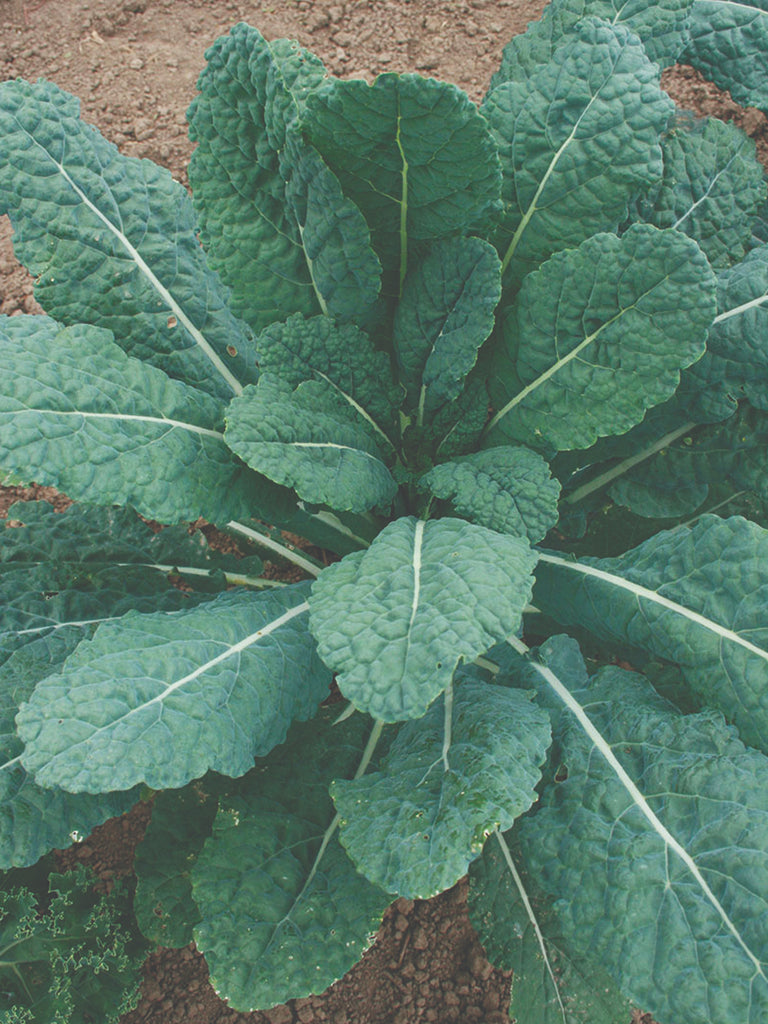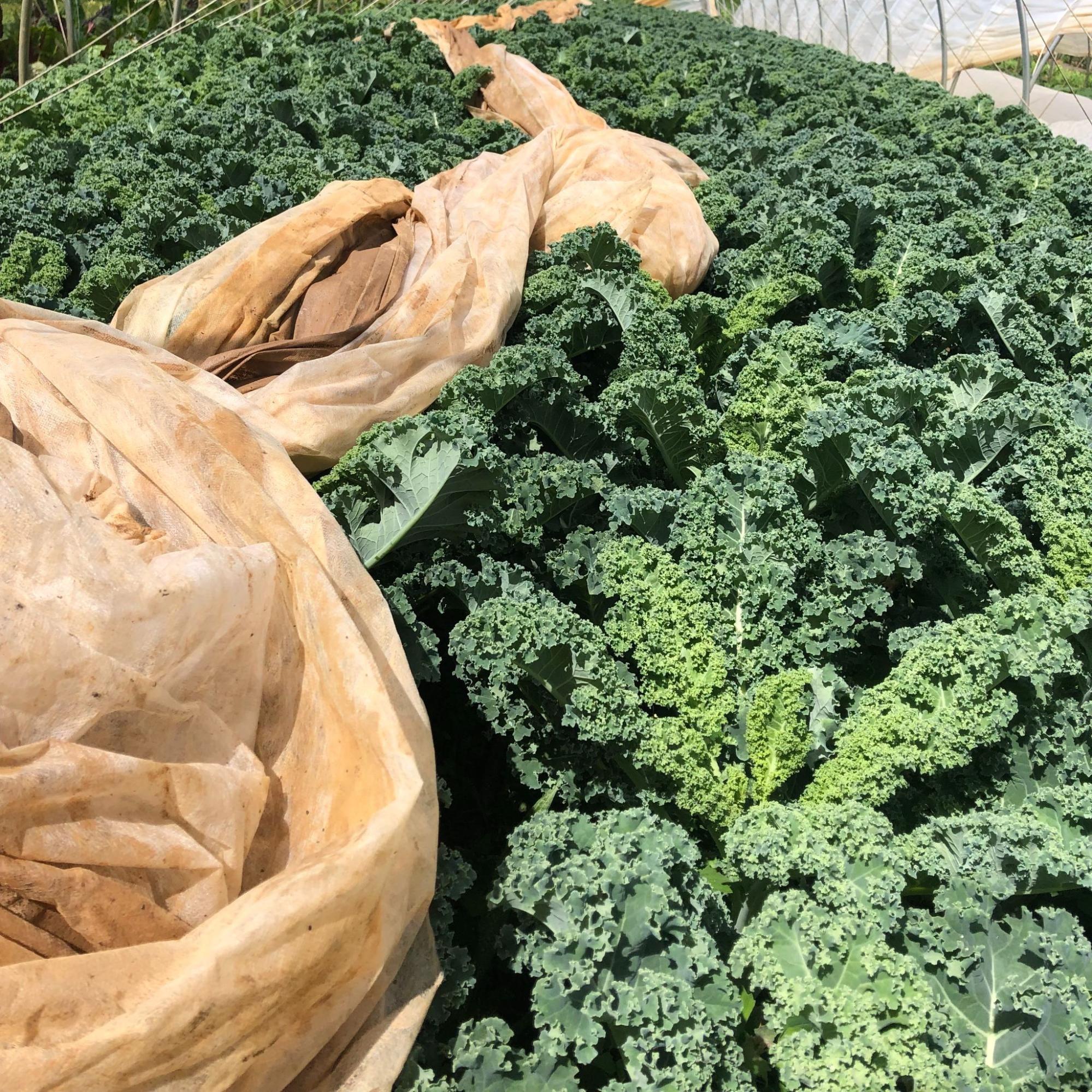What Is Kale?
It seems a garden without kale is incomplete. With so many varieties, colors, textures and flavors, there is surely one to suit any taste. Some of them are so colorful and beautiful that they can even be used as an ornamental! Extremely nutritious, kale can be eaten fresh, in salads, or cooked in any number of ways limited only by one’s imagination.
Though it’s been trending in the culinary world for the past ten years or so, kale has actually been cultivated for over 2,000 years, originating in the eastern Mediterranean. This nutritional powerhouse is a must-have in the garden.
Six Main Types of Kale
With all the kales to choose from it may be hard to decide! But fear not. Read on for a helpful explanation on all of the different types.
Curly Kale
Curly kales are by far the most common types of kale. This is likely what you’d find bunched or bagged in your local grocery store. It’s called curly because it is, well, curly! Its tightly-packed, wavy leaves offer good crunch and texture to any salad, and its thick composition holds up well in soups.
Dwarf Blue Curled Scotch - These heavily crinkled leaves make fine kale chips and hold up well after harvest. The 12- to 14-inch-high plants with a wide plume of leaves are slow to bolt, cold-hardy, and overwinter well.

Italian Kale
Italian kale, better known as lacinato or dinosaur kale, is a staple in traditional Italian foodscapes. Unlike other types of kale, Italian is especially tender, making it ideal for raw eating or roughly chopping for an omelet or sandwich.
Lacinato - The Italian darling of gourmands the world over! Also popular with kids for its nickname, dinosaur kale. These dark, green, textured leaves conjure images of prehistoric flora. This variety has unparalleled flavor and texture, especially after a frost.

Russian Kale
Russian kale is also referred to as flat leaf kale and is some of the most cold-tolerant of the kale types. They’re used late in the season for overwintering, surviving temperatures down to -10 degrees Fahrenheit, and offer a forgiving texture for raw eating.
Red Russian - This heirloom is from Russia by way of Canada and has reddish purple petioles and veins. The delicately lobed leaves change from green to purple as the weather cools. This variety is extremely tender raw or cooked either as baby leaves or matured.
Red Ursa - This award winning child of Red Russian and Siberian kale (another cold-hardy variety) has the thick, slightly frilled leaves of Siberian with the hallmark reddish purple veins of Red Russian.

Purple Kale
While there are a few varieties of purple kale, this type’s trademark is its bright, gorgeous color. Not only is purple kale delicious and gorgeous in a meal, it makes a beautiful addition to an ornamental flower garden!
Scarlet - These large leaves are a shocking deep purple color and grow almost three feet in height. The leaves become even more vibrant as the frosts start coming. Because of its color, this variety has more antioxidants than other kales.

Baby Kale
Baby kale is just that: baby. The young leaves are harvested due to their especially tender quality. Baby kale is generally considered best for raw eating but is also delicious sautéed like spinach. You can grow any of these incredible varieties for a young harvest to enjoy this tender type!
Ornamental Kale
Kale is beautiful. We could leave it at that. But some of our more stunning Scarlet or Dazzling Blue varieties really do add an edible beauty to any landscape. Whether it’s height you’re looking for (Scarlet Kale gets up to three feet tall) or less height and more texture (Dwarf Blue Curled Scotch measures in at 12 inches or so), there’s a variety to mix into your ornamental garden.
There are also varieties of ornamental kale that are bred for show and not flavor. These make stunning landscape plants as well as cut foliage for autumn bouquets. But really, any of these varieties could be used as such.
Kale Benefits
Kale has certainly earned its reputation as a superfood. It is widely considered one of the most nutrient-dense vegetables out there. It offers plenty of dietary fiber and is high in vitamins A, C, and E. It also packs a punch of calcium, potassium, and iron.

How to Cook Kale
There are about as many ways to cook kale as there are varieties to choose from - perhaps even more. Some of our favorites include a massaged kale salad with rice vinegar and sesame seeds. Or tossed into an omelet with bacon and goat cheese! You can even throw a handful of roughly chopped curly kale into your next batch of chicken noodle soup to add plenty of vitamins and minerals.
No matter which kale you grow or how you choose to eat it, this easy green is sure to please in the garden and at the kitchen table.

|
Article Written by: Hannah Gibbons |
|
About the Author: Hannah Gibbons, an employee at Sow True Seed since 2020, has nearly a decade of experience in the agricultural industry. Their passion for environmental education and regenerative agriculture has been the cornerstone of their work, aimed at making gardening accessible to all. |


